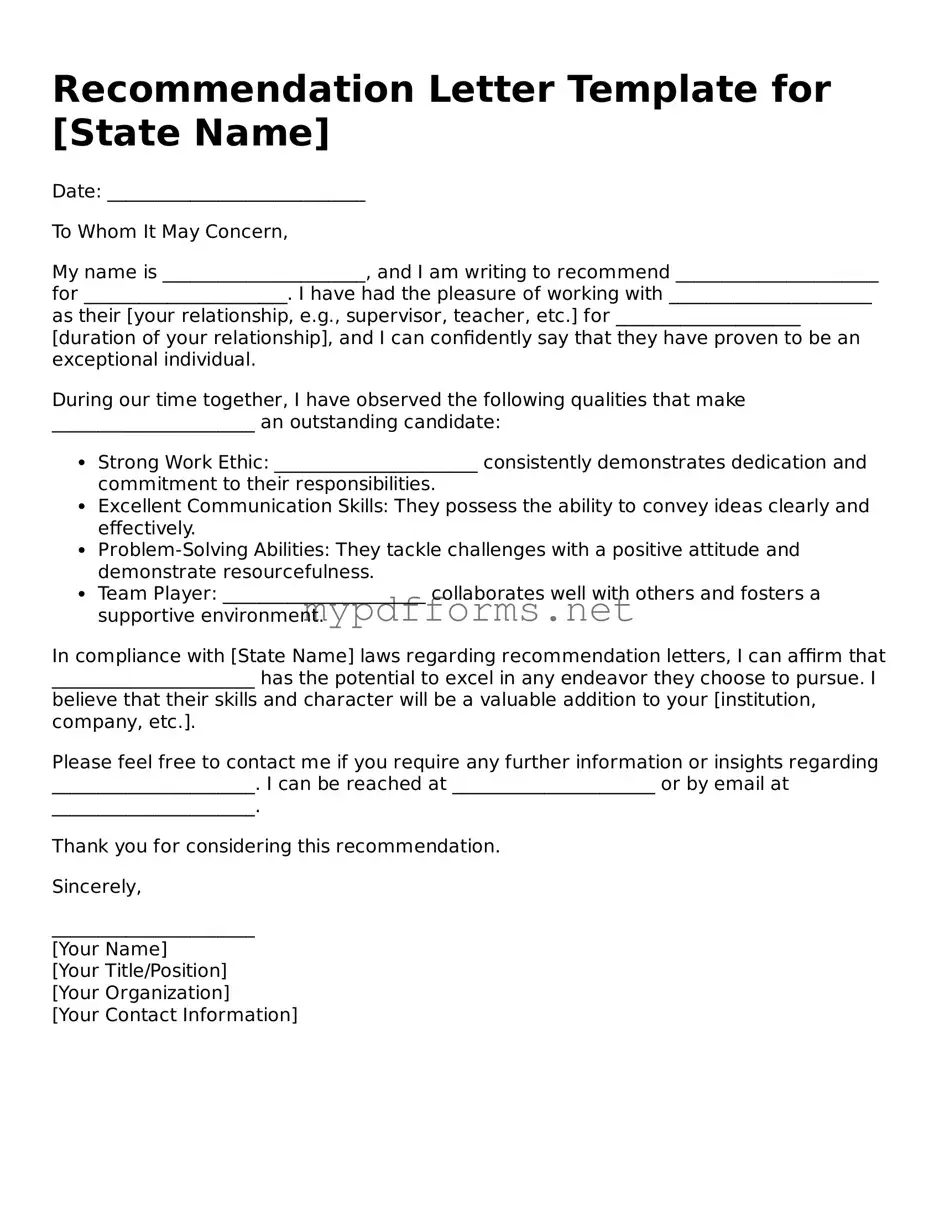A reference letter is quite similar to a recommendation letter. Both documents serve the purpose of endorsing an individual's skills, character, and accomplishments. While a recommendation letter is typically requested for job applications or academic programs, a reference letter is often provided by someone who knows the individual well, such as a former employer or teacher. The focus in both letters is on the strengths and positive attributes of the person being recommended.
A letter of support shares similarities with a recommendation letter, particularly in its aim to advocate for someone. This type of letter often accompanies grant applications or community projects. It highlights the individual’s contributions and the impact of their work. Like a recommendation letter, a letter of support emphasizes the positive qualities of the person, but it may be more focused on specific projects or initiatives rather than general skills or character traits.
An endorsement letter is another document that aligns closely with a recommendation letter. It is used to publicly support someone for a specific role, such as a political position or a community leadership role. Both letters aim to persuade the reader of the individual's qualifications. However, endorsement letters often have a more formal tone and may include a call to action, urging others to support the candidate.
A character reference letter is similar in that it speaks to a person's character rather than their professional abilities. This type of letter is often used in legal situations, such as court cases or job applications where moral integrity is essential. Like a recommendation letter, it provides insight into the individual’s personal qualities, but it focuses more on their behavior and values in various situations.
An academic reference letter is another variant that shares common ground with a recommendation letter. This document is typically requested by students applying for colleges or scholarships. It details the student’s academic performance, extracurricular activities, and personal qualities. Both letters aim to provide a comprehensive view of the individual, but academic reference letters are specifically tailored to highlight educational achievements and potential.
A personal reference letter is akin to a recommendation letter but is often more informal. Friends or family members usually write this type of letter. It focuses on the individual’s personality, values, and life experiences. While it may lack the professional tone of a recommendation letter, it still serves to vouch for the individual’s character and suitability for a particular role or opportunity.
A job reference letter is similar to a recommendation letter in that it is often requested during the job application process. Employers write these letters to attest to an employee’s work ethic, skills, and contributions. Both types of letters aim to provide potential employers with a trustworthy perspective on the candidate’s abilities. However, job reference letters are more focused on past job performance and specific achievements within a workplace context.
A testimonial letter can also be compared to a recommendation letter. This document is often used in marketing or promotional contexts, where a satisfied customer or client shares their positive experience with a product or service. While recommendation letters focus on individuals, testimonials highlight the value of a service or product, yet both serve to build credibility and trust.
For those looking to understand vehicle transactions better, the comprehensive guide on a Motor Vehicle Bill of Sale can be highly beneficial. You can find this resource here, which outlines the necessary details required to ensure a smooth sale process.
Lastly, a professional bio can be seen as a document similar to a recommendation letter. While a bio is typically a brief overview of a person's career and accomplishments, it can also serve to endorse an individual’s qualifications. Both documents present a narrative that highlights strengths, but a professional bio often includes a more personal touch, giving insight into the individual’s journey and values.
